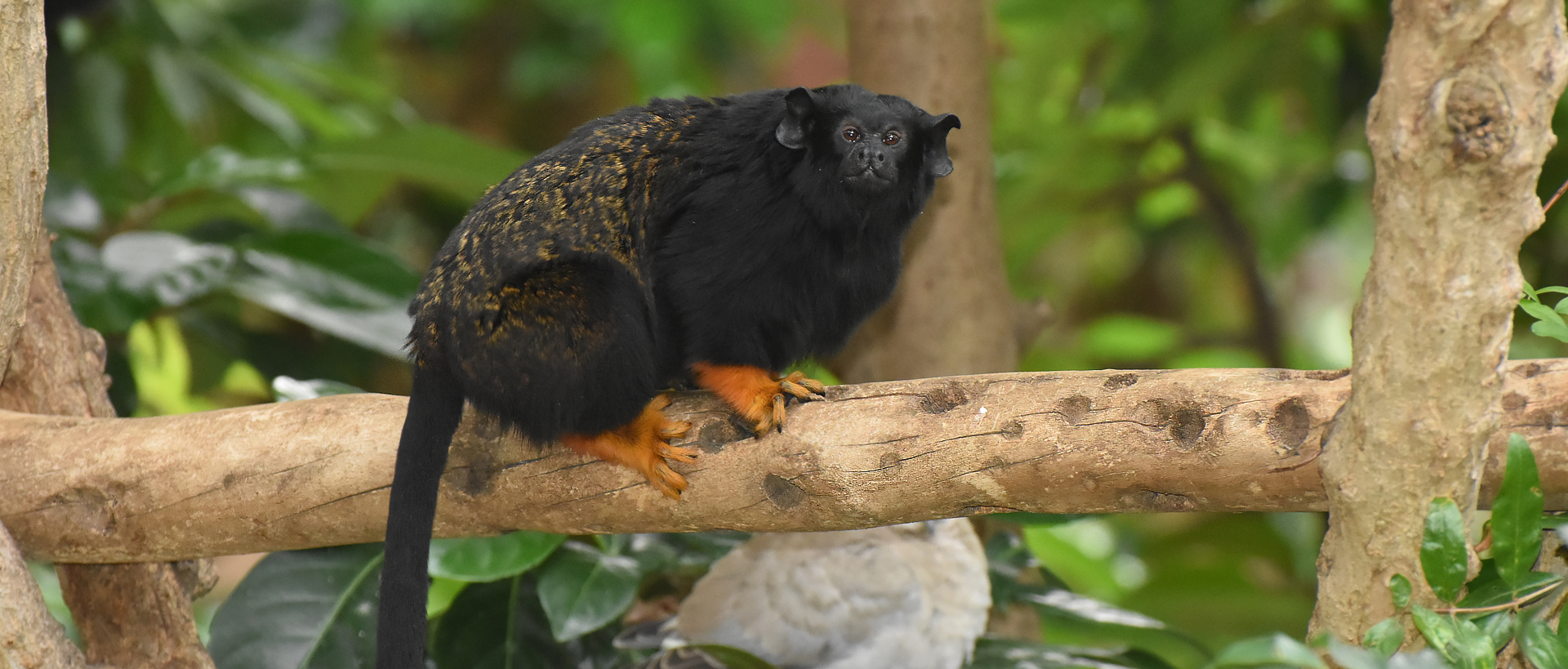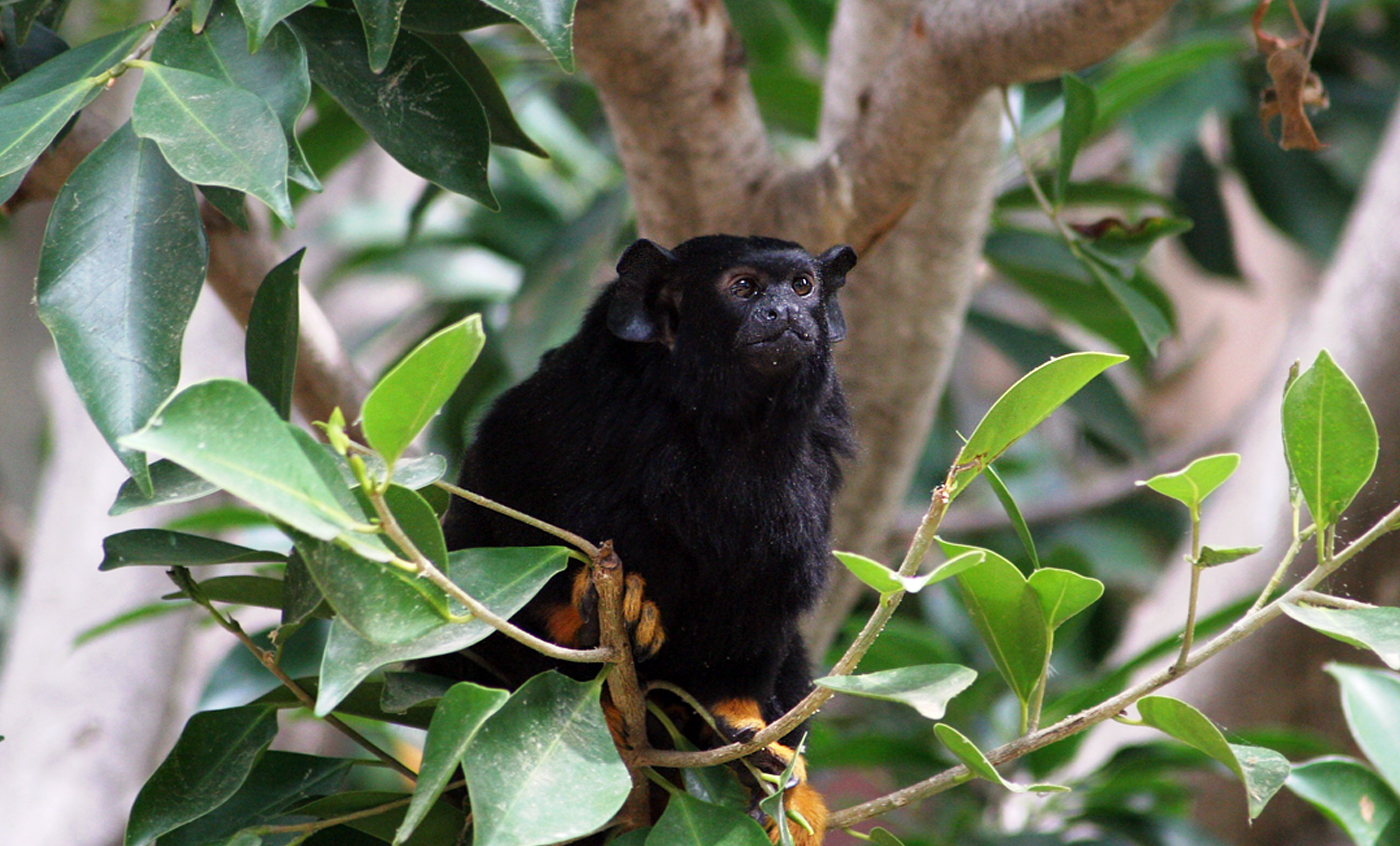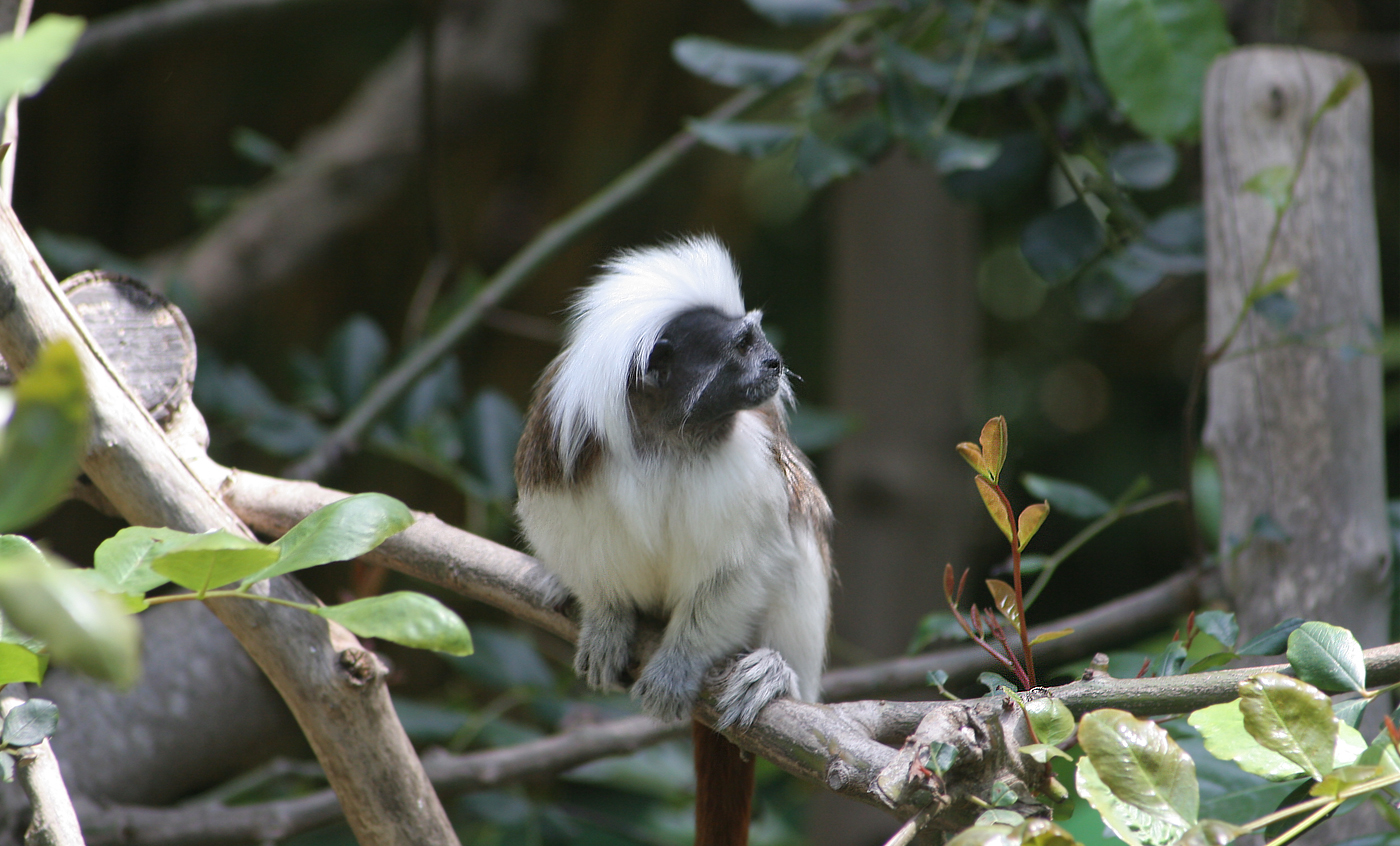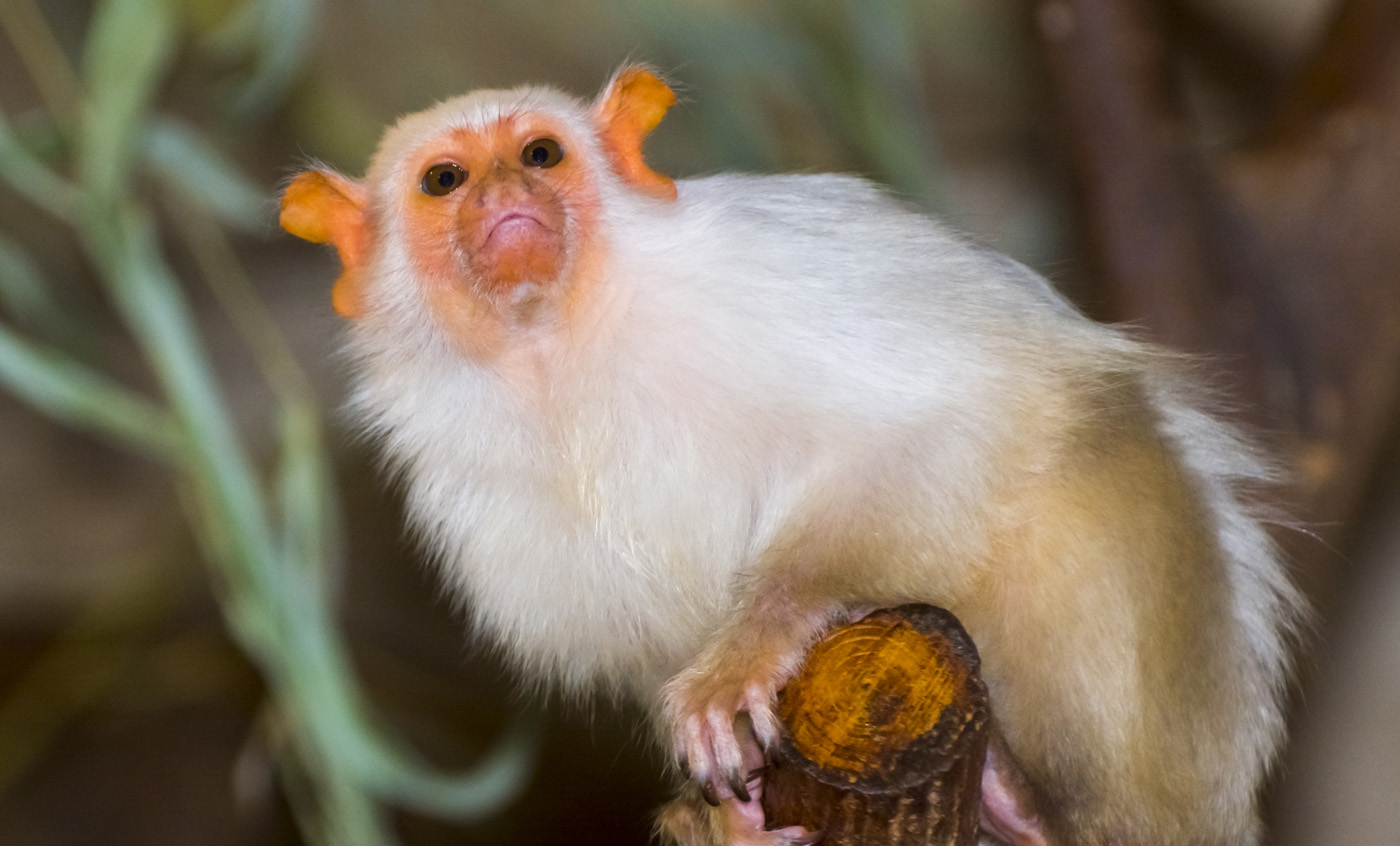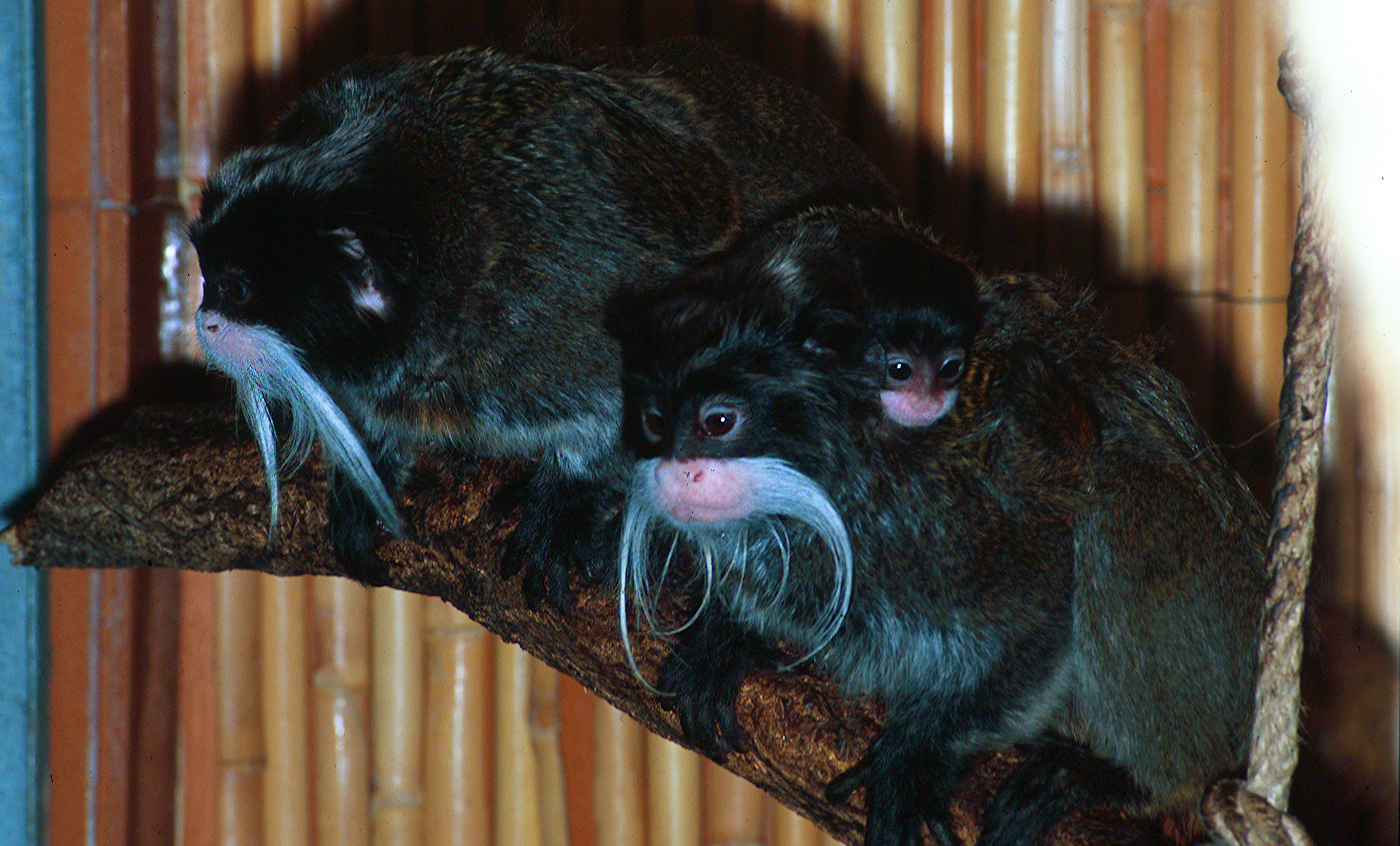Red-handed tamarin
The Red-handed tamarin is distinguishable by the contrast of its dark coat and the golden hair on its feet and hands. In fact, its scientific name refers to the mythological Midas king, who turned anything he touched into gold.
It is omnivorous and lives in family groups of up to ten individuals in rainforests, flooding forests and forest-savannahs of north-eastern Brazil, Suriname and the Guianas.
Breeding program
Natural habit
North-eastern Brazil, Suriname and the Guianas.
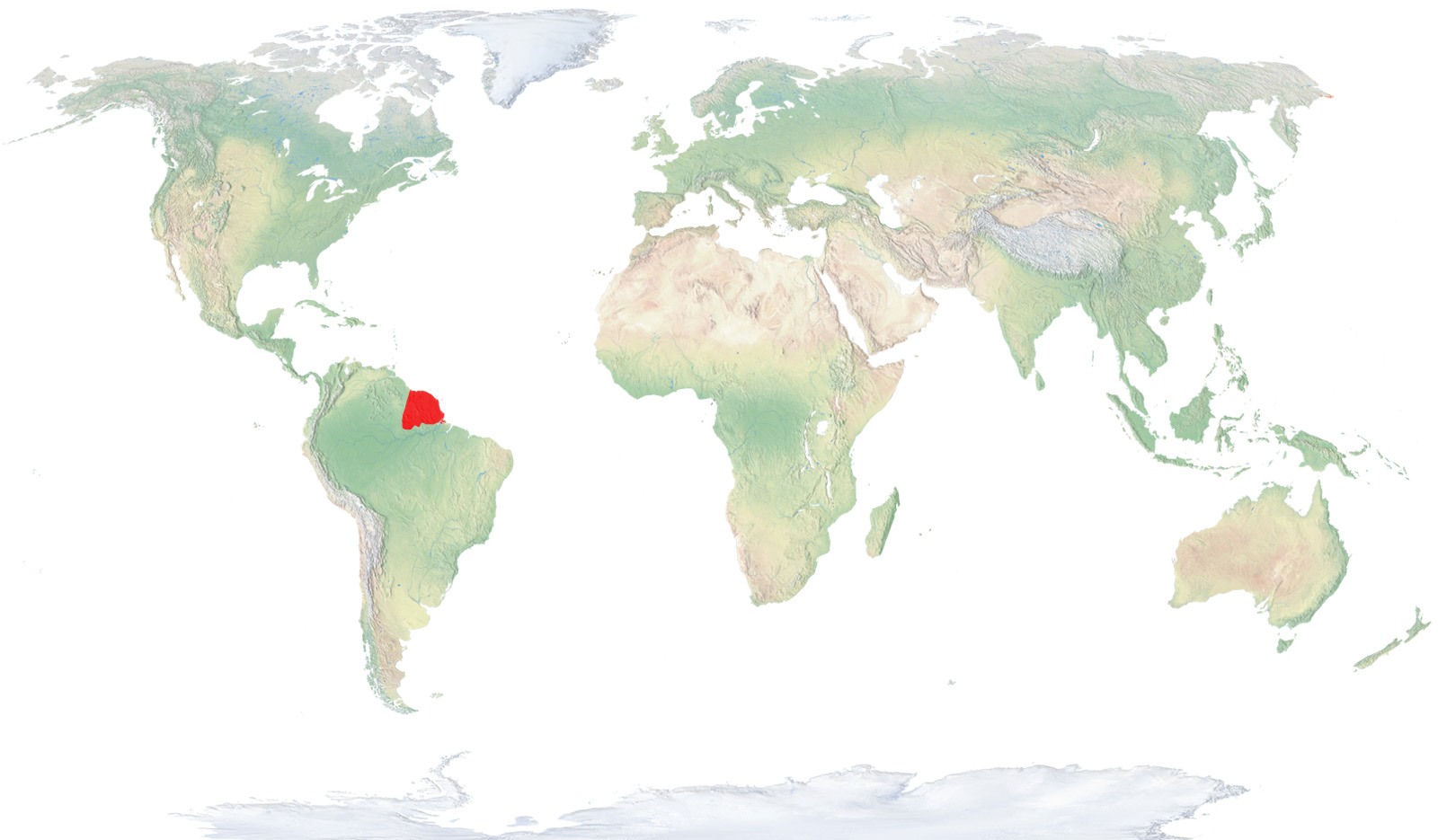
- Distribution / Resident
- Breeding
- Wintering
- Subspecies
Risk level
- Extint
- Extint in the wild
- Critically endangered
- In Danger
- Vulnerable
- Near threatened
- Minor concern
- Insufficient data
- Not evaluated
Taxonomy
Physical characteristics
Biology
Reproduction
Biology
The Red-handed tamarin is distinguishable by the contrast of its dark coat and the orange-golden hair on its feet and hands. The hair on its body, tail, face and ears is black, with light spots on the back.
It occurs in a wide range of forest areas: rainforests, flooding forests, forest-savannahs and other more open habitats.
Its diet is omnivorous and can eat fruits, nectar, flowers and tender sprouts, but most of its diet consists of insects and other arthropods. Occasionally, it captures small vertebrates such as frogs and small reptiles.
Only one female in the group reproduces and, after 150 days of gestation, two infants are born, who are carried by the father and other members of the group, which only hand them to the mother to breastfeed.
It lives in family groups of up to fifteen individuals, who defend the territory against other groups. It is a diurnal and very arboreal animal, who usually moves between the branches and trunks of the trees, ten to twenty meters from the ground of the rainforests.
It is a species which is quite adaptable to environments altered by human beings, and it is commonly found in many regions of its distribution area.
The Zoo of Barcelona takes part in the ESB of this species.



